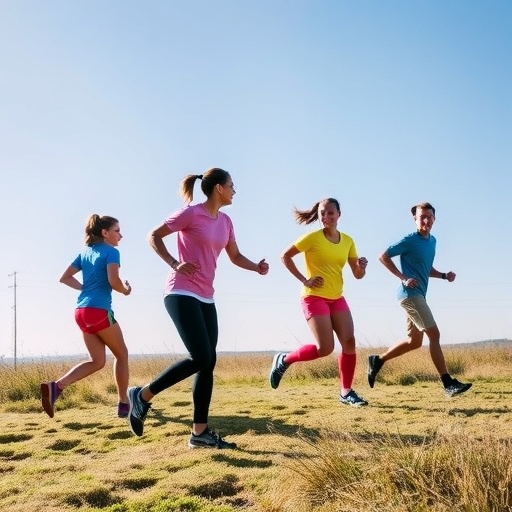June 27, 2017 – Noninvasive brain stimulation and physical therapy–alone or in combination–improve some measures of walking ability in patients with Parkinson's disease (PD), concludes a clinical trial in the American Journal of Physical Medicine & Rehabilitation, the official journal of the Association of Academic Physiatrists. The journal is published by Wolters Kluwer.
Transcranial direct current stimulation and physical therapy "could be used alone or together as a combination treatment protocol to improve walking speed and step length among patients with PD," according to the study by Krisna Piravej, MD, and colleagues of King Chulalongkorn Memorial Hospital, Bangkok, Thailand. In addition to showing a benefit of brain stimulation, the results suggest that physical therapy has benefits beyond symptom relief for patients with PD.
Alone or Together, Both Treatments Improve Walking in PD
The study included 60 patients, average age 65, with slow walking speed due to stage 2 or 3 PD. Patients were randomly assigned to three groups. One group received a noninvasive brain stimulation technique called transcranial direct current stimulation (tDCS). This procedure delivers a mild electrical current through the brain, with the goal of stimulating neural networks involved in motor coordination. Patients received a total of six 30-minute tDCS sessions over two weeks.
Another group received a physical therapy program, focusing on joint range of motion and flexibility, leg muscle strengthening, and balance and gait training. The third group received both tDCS and physical therapy. Using a computerized motion capture system, the researchers performed gait analysis to assess walking speed and other characteristics before and after treatment. Fifty-three patients completed the study.
The three groups had similar and significant improvement in some measures of gait. Walking speed increased by an average of about 19 percent, with only minor differences between groups. Step length increased by approximately 12 percent. Both improvements lasted for at least eight weeks after the end of treatment.
Other gait measurements–step width and cadence–showed little or no change. All groups also had a small improvement in scores on a standard PD rating scale, although the clinical relevance of this change was unclear.
Slow walking is a disabling problem for patients with PD, a progressive movement disorder. Deep brain stimulation is an effective treatment for slow walking and other manifestations of PD. However, its use is limited by the risk of potentially severe complications due surgery to place brain electrodes.
As a noninvasive, nonsurgical procedure, tDCS avoids these risks. Electrical stimulation is delivered via electrodes placed on the scalp. In the study, a few patients experienced a burning sensation during tDCS; otherwise, there were no complications.
While physical therapy has been used to treat symptoms in patients with PD, it has not been regarded as a standard treatment. The new study adds to previous evidence that physical therapy targeting joint motion, flexibility, muscle strength, cardiovascular fitness, and balance can improve problems with gait abnormality in patients with PD.
"Our study demonstrated that both tDCS and physical therapy are effective in improving the walking ability in patients with PD," Dr. Piravej and coauthors conclude. "A combination of the treatments did not demonstrate a significantly better outcome." They suggest that physical therapy could provide an alternative in "resource limited" settings without access to tDCS. In the future, the ability to provide "patient-specific stimulation" tDCS at home could offer additional advantages.
###
Click here to read "Effects of Transcranial Direct Current Stimulation Plus Physical Therapy on Gait in Patients With Parkinson Disease: A Randomized Controlled Trial."
Article: "Effects of Transcranial Direct Current Stimulation Plus Physical Therapy on Gait in Patients With Parkinson Disease: A Randomized Controlled Trial." (doi: 10.1097/PHM.0000000000000783)
About AJPM&R
American Journal of Physical Medicine & Rehabilitation focuses on the practice, research and educational aspects of physical medicine and rehabilitation. Monthly issues keep physiatrists up-to-date on the optimal functional restoration of patients with disabilities, physical treatment of neuromuscular impairments, the development of new rehabilitative technologies, and the use of electrodiagnostic studies. The Journal publishes cutting-edge basic and clinical research, clinical case reports and in-depth topical reviews of interest to rehabilitation professionals.
About the Association of Academic Physiatrists
The AAP was founded in 1967 to serve as the national organization of physiatrists who are affiliated with medical schools. The AAP is a member organization of the Association of American Medical Colleges (AAMC). The objectives of the Association are to promote the advancement of teaching and research in Physical Medicine and Rehabilitation within an academic environment. The organization acts as a sounding board and forum for the exchange of ideas and information relative to all phases of the art and science of Physical Medicine and Rehabilitation.
About Wolters Kluwer
Wolters Kluwer N.V. (AEX: WKL) is a global leader in information services and solutions for professionals in the health, tax and accounting, risk and compliance, finance and legal sectors. We help our customers make critical decisions every day by providing expert solutions that combine deep domain knowledge with specialized technology and services.
Wolters Kluwer reported 2016 annual revenues of €4.3 billion. The company, headquartered in Alphen aan den Rijn, the Netherlands, serves customers in over 180 countries, maintains operations in over 40 countries and employs 19,000 people worldwide.
Wolters Kluwer shares are listed on Euronext Amsterdam (WKL) and are included in the AEX and Euronext 100 indices. Wolters Kluwer has a sponsored Level 1 American Depositary Receipt program. The ADRs are traded on the over-the-counter market in the U.S. (WTKWY).
For more information about our solutions and organization, visit http://www.wolterskluwer.com, follow us on Twitter, Facebook, LinkedIn, and YouTube.
Media Contact
Connie Hughes
[email protected]
646-674-6348
@WKHealth
http://www.lww.com
############
Story Source: Materials provided by Scienmag




